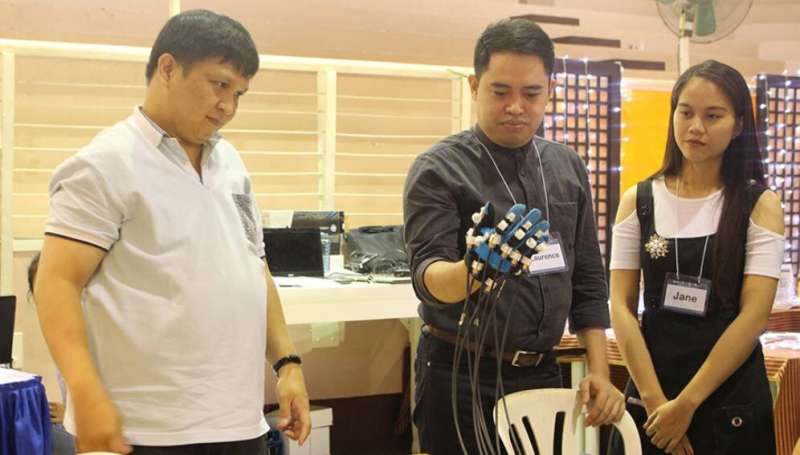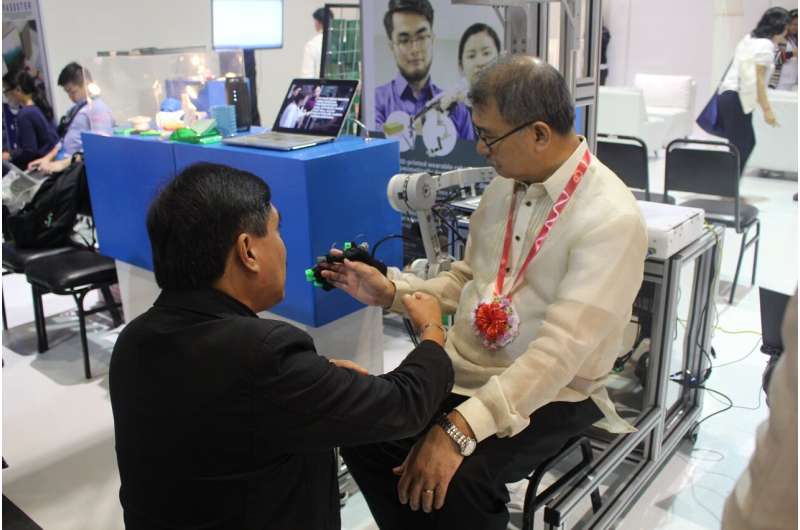Robots can assist physiotherapy during the pandemic

Robotics is among the solutions under consideration by physiotherapists to respond to their patients' needs, especially in the light of COVID-19.
According to Michael Gabilo, president of the Philippine Physical Therapy Association (PPTA) Inc., and secretary of the United Healthcare Organization of the Philippines Inc., there are currently 32,893 registered physical therapists in the Philippines, but less than half of them have active registration.
A number of physical therapy clinics and centres have closed down because of the country's lockdown starting 15 March and which remains in effect until now under various forms of quarantine, affecting patients' access to treatment and the capacity of physical therapists to earn, according to a survey conducted by the PPTA to determine the impact of COVID-19 on the practice of physical therapy.
Respondents said their patients, particularly the elderly and those suffering from neurological conditions such as stroke, face the possibility of regression from interrupted therapeutic regimens.
Some physiotherapists have resorted to video calls to remotely supervise exercise sessions, but this does not work for patients without Internet access. Overall, the survey found that the lockdown situation has resulted in loss of livelihoods for therapists and also the patients' capacity to pay for therapy.
Even those who can afford home care may opt to skip treatment to avoid possible exposure. This is especially true of the elderly and those with pre-existing medical conditions—both being groups that have been identified as vulnerable to COVID-19.
"With the devolved healthcare system we have in the Philippines, health is not a priority for some local governments. Therefore, the needs of persons with disabilities are not properly addressed, particularly those concerning their physical therapy needs," says Gabilo.
The worry now is that once the lockdown is fully lifted, there will be a surge in patients needing physiotherapy that can overwhelm an already overburdened system. "In the context of actual treatment, ideally, it should be 1:1 [physiotherapist—-patient ratio] since the [therapist] should directly supervise the active treatment and [this] cannot be delegated to others where clinical reasoning is part and parcel," says Gabilo.
One possible solution is robots. "In the last PPTA convention, we introduced some technological advancements that can be an adjunct in the practice of physical therapy in the clinics, particularly the use of robots," says Gabilo. "The technology is already in the country now, though not all can avail the facilities because of the financial implications."
A robotics project currently being developed has the possibility of being cheaper than existing imported options. Research for the 'AGAPAY Project', which is developed for post-stroke rehabilitation, is aimed at creating a biomimetic exoskeleton for the upper body, particularly for the shoulders, upper and lower arms, wrists and hands.
"We anticipate the exoskeletons from the AGAPAY Project to be more affordable than others currently in the market," Peter Tenido, project director, Innovation and Technology Office and lecturer, De La Salle University, Manila, tells SciDev.Net.
According to Tenido, a Royal Academy of Engineering LIF fellow, the AGAPAY Project is intended to provide "assistance to overburdened clinics and therapists while also providing reliable, easy to use, safe, affordable and effective treatment to patients".

Exercises using the exoskeletons can be semi-automated, allowing a single therapist to take care of several patients at the same time. The robots track patients' progress in real time and can thus hasten the recovery process.
Reynaldo Rey-Matias, professor and chair of the department of physical and rehabilitation medicine at St. Luke's Medical Centre College of Medicine, Quezon City, and fellow of the Philippine Board of Rehabilitation Medicine, says that efforts are underway to make post-stroke rehabilitation more accessible to indigent patients. "[The] Philippine Academy of Rehabilitation Medicine is currently coordinating with PhilHealth on rehabilitation packages for stroke and other disabling conditions, which might include assistive technology devices like robots."
Philhealth, or the Philippine Health Insurance Corporation, is the national health insurance programme in the country.
"The role of robot-assisted therapy in stroke rehabilitation is currently an adjunct to rather than a replacement for conventional rehabilitation therapy," Rey-Matias cautions. "Robot-assisted therapy with exoskeleton devices may not be able to replace conventional physiotherapy for improving gait function in patients with stroke but is recommended for use in combination with conventional physiotherapy, preferably in the subacute stage of stroke."
Technology used in physiotherapy need not be sophisticated, says Gabilo. "Filipino physical therapists are trained to be innovative and resourceful. When a physiotherapist is immersed in a community where the facility or clinic have limited resources, [the therapist] can improvise certain equipment in order to continue the service and achieve the set goals for the patient."




















